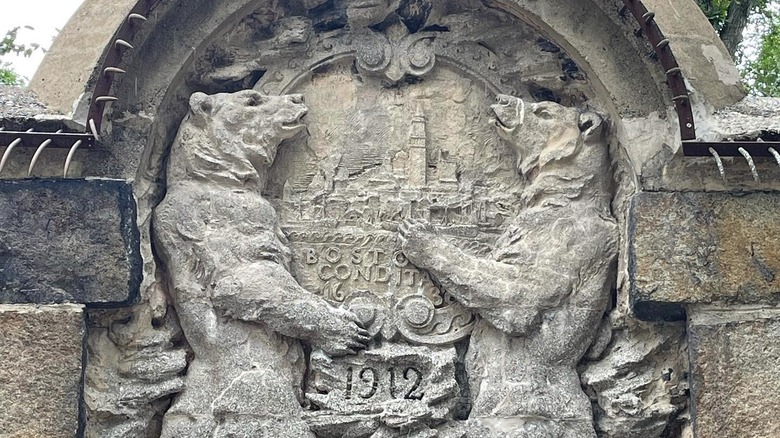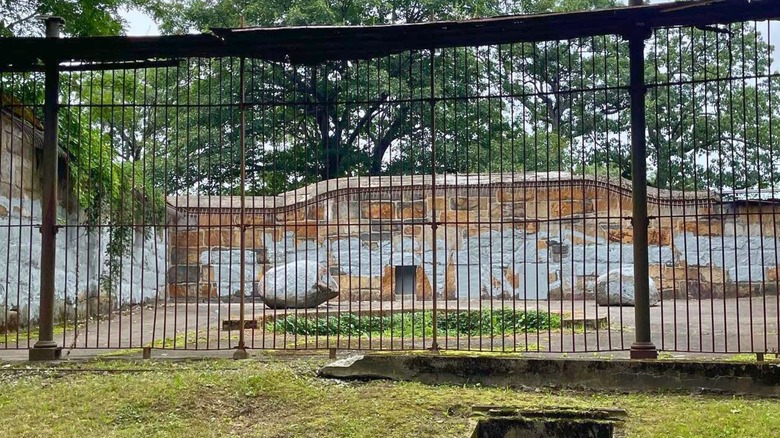The Forgotten Bear Dens of Franklin Park
While Boston Common is recognized as America’s oldest park, Franklin Park stands out as the city’s largest, spanning 485 acres. This expansive green space features a pond, hiking trails, and the Franklin Park Zoo. Today, the zoo is enclosed in the northeast corner of the park, but it once had a peripheral bear exhibit that required visitors to walk 10 minutes from the current boundaries. These bear dens, which were once a marvel when they opened in the 20th century, are now overgrown and serve as an eerie relic for those who take the time to explore them.
The Franklin Park Zoo was initially conceived by Frederick Law Olmsted, the renowned landscape architect behind Chicago’s Riverside and New York City’s Central Park. Olmsted’s vision for Franklin Park emphasized open spaces with natural pathways and wooded areas. He designed a zoo-like area featuring goats, donkeys, and bears, but he passed away before it could be realized. His disciple, Arthur Shurtleff, continued the work, maintaining the naturalistic setting without fences separating the zoo from the rest of the park. The zoo was free to the public and designed to blend seamlessly into the surrounding environment.
The bear dens, along with an aviary house, were among the first exhibits to open in 1912. At the time, they attracted nearly 10,000 visitors. The exhibit featured various bear species brought from Germany. However, in the 1950s, the zoo faced financial difficulties and had to start charging admission. A fence was erected around the zoo, excluding the bear dens, which were left abandoned and gradually fell into disrepair.
Exploring the Bear Dens

The bear dens can be found on the north side of Franklin Park, easily accessible from entrances bordering Jamaica Plain, one of Boston’s most picturesque neighborhoods known for its green spaces. For travelers arriving by air, it takes about a 35-minute drive or a 45-minute public transit ride from Boston Logan International Airport to the park’s north end. The dens are straightforward to locate—Google Maps even marks them—and you don’t need to pay to explore them.
To reach the dens, look for a stately stone staircase off the side of a path north of the White Stadium. Climbing up the stairs leads you to the bear dens, which are arranged in a half-circle around a central viewing platform at the top of the staircase. Visitors were once separated from the bears by shrubs, granite walls, and iron fencing. The dens originally had pools for the bears, which are now empty, but you can still see the basins and boulders from the exhibit. The second den features an impressive stone carving of two bears holding up the Boston city seal.
Restoration and Future Plans
Although the retired bear dens are currently in a state of disrepair, the city has initiated efforts to restore them. The first phase of improvements began in 2025, focusing on the safety of the site. Long-term plans include bringing the area back to life through programming and possibly adding splash pads for children in the former bear pools.
These forgotten spaces offer a glimpse into Boston’s past and highlight the city’s commitment to preserving its history while adapting to modern needs. Whether you’re a local or a visitor, exploring the bear dens is a unique way to connect with the natural and cultural heritage of Franklin Park.



